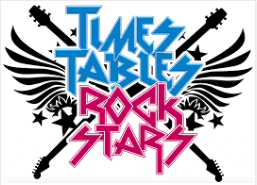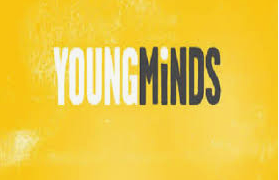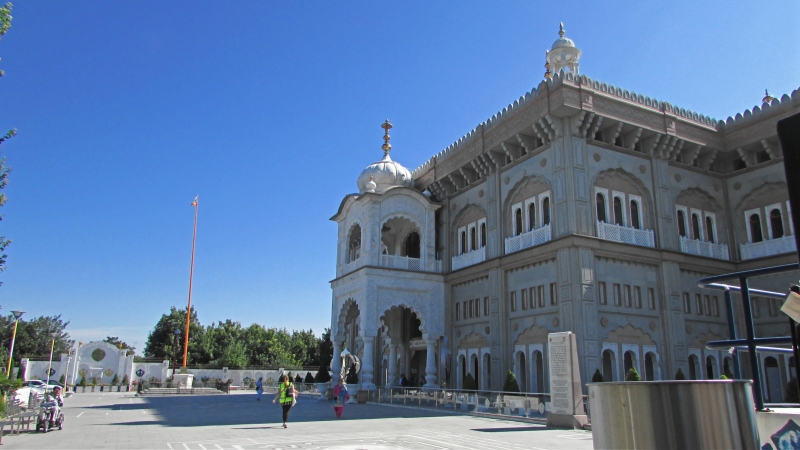
Year 5 have been studying Sikhism in RE this year, what better way to get to understand a religion than visiting their sacred temple?
Before entering the temple everyone in the group covered their head with a scarf. We were led to a large room off the entrance hall where we were able to leave our shoes and bags. Wafts of delicious smells met us as they drifted down from the Langar Hall upstairs. Ladies dressed in colourful saris nodded at us and smiled as we walked past and we watched as men walked solemnly up the staircases to the important ceremony being held above.
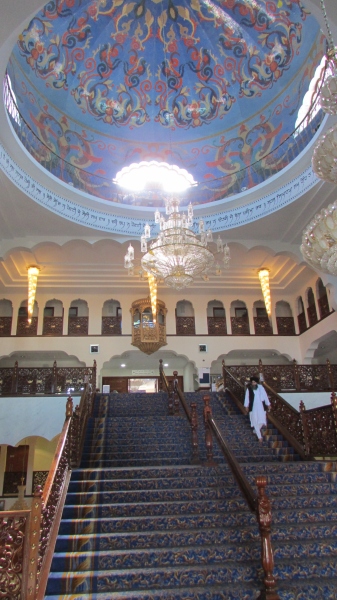
Once our heads were covered and we had taken our shoes off, we were asked to go the bathrooms and wash our hands. Our guide, Mrs Gill, then led us through the heart of the temple up a grand carpeted staircase with wooden balustrades and into a wide open room to the left.
This was a ceremony room, as there was a 48 hour prayer reading in the main room.
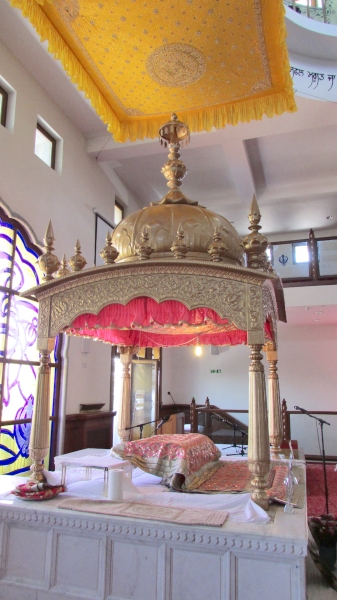
Mrs Gill explained that on entering the room she would be making a sign of respect as was custom. She invited those of us who wished to either copy her or make our own sign of respect. We watched as she put her hands together in front of her, knelt down and placed her hands on the carpet in front of her. She then bowed her head until it touched the floor and slowly raised to standing position again.
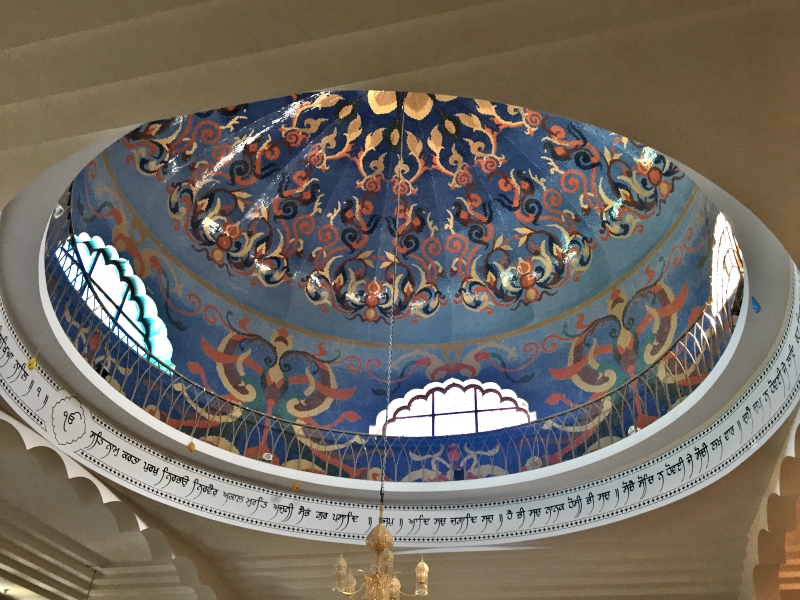
The red carpeted room was empty apart from a bed at the far end opposite the entrance with a beautiful stained window behind. The bed had four elaborate golden posts which supported a pink silk embroidered canopy over the mattresses where the Guru Granth Sahib sits. Mrs Gill explained, that Sikhs don’t see this as a bible or a thing but they consider the Guru Granth Sahib a teacher – a spiritual body. On the bed there were other objects, some statues, a shield and a pile of brightly coloured silks.
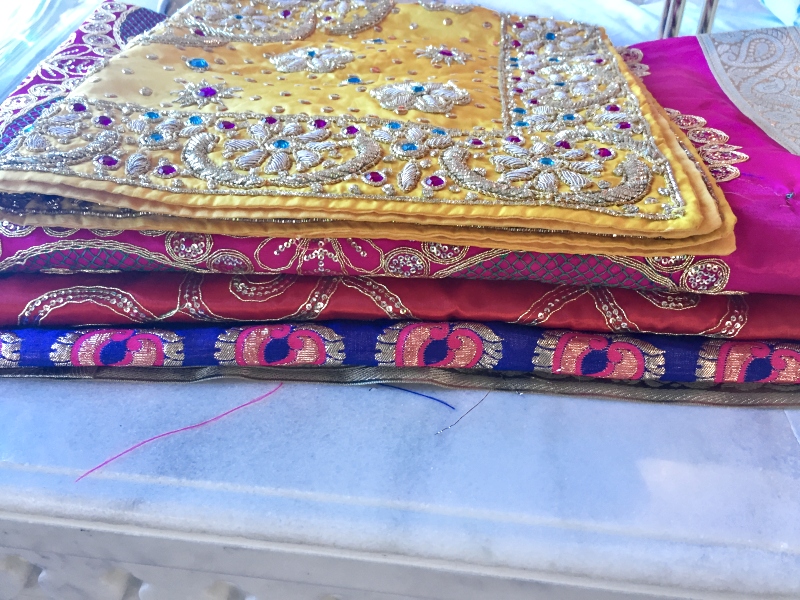
Why do we cover our heads?
Mrs Gill asked us why we thought we had to cover our heads. Lots of hands shot up and although all of our answers were correct she explained that Sikhs use the headscarf to remind themselves that once inside the temple, their minds mustn’t stray. The headscarf was to keep them focused on their meditation and not let other thoughts enter their minds to distract them.
Why do we take our shoes off?
Her second question to Year 5 was why were we asked to remove our shoes? Again, numerous hands shot up and all of our answers were correct. Mrs Gill went on to explain that removing shoes was also symbolic of being in the here and now, the present. It was a reminder to not look back on yesterday and not think about tomorrow but to stay focused on what was happening now.
Whilst we were in the room listening to Mrs Gill a lady came in through the door. Even though she was advised we were having a discussion, she was determined to finish what she had set out to do. The lady made her way over to the bed and in front there was a long low box. She carefully made her way over and popped some coins through the hole on the top. It was a collection box and she wanted to add her donation.
We learnt that the Gurdwara cost £15,000,000 and took 15 years to build. After 8 years they were able to enter and use the building. Ever since money has been spent on furnishings and decorations. All of this money has come from the local Sikh community and the continued donations go towards the upkeep of the building and paying the bills.
What is on the spiritual bed?
Kanda – A statue that signifies eternity and one
Enkoncar – A statue that signifies, our world, the spiritual world, a two edged sword and a point
Silk fabrics
Shield
What are the 5 K’s?
Kesh (uncut hair)
Kara (a steel bracelet)
Kanga (a wooden comb)
Kaccha – also spelt, Kachh, Kachera (cotton underwear)
Kirpan (steel sword)
You can find out more about the 5 Ks and what they signify on the BBC website
What we ate at the Gurdwara
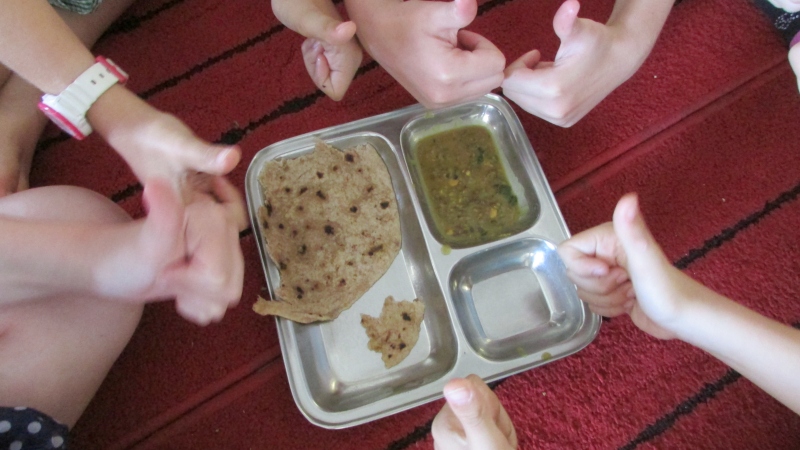
Sweetbread – parshad
Langar – wheatflour chapatti and vegetable dahl in the Langar Hall
The students were very interested to try two kinds of food offered at the Gurdwara, the parshad – very similar to a sweet cookie dough and langar with vegetable dahl that went down a treat.

